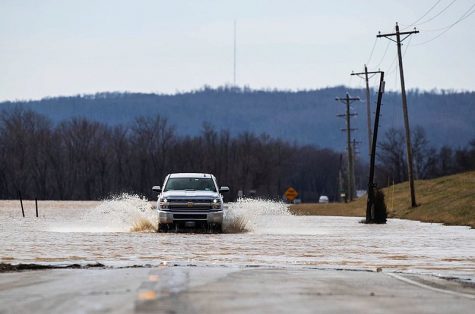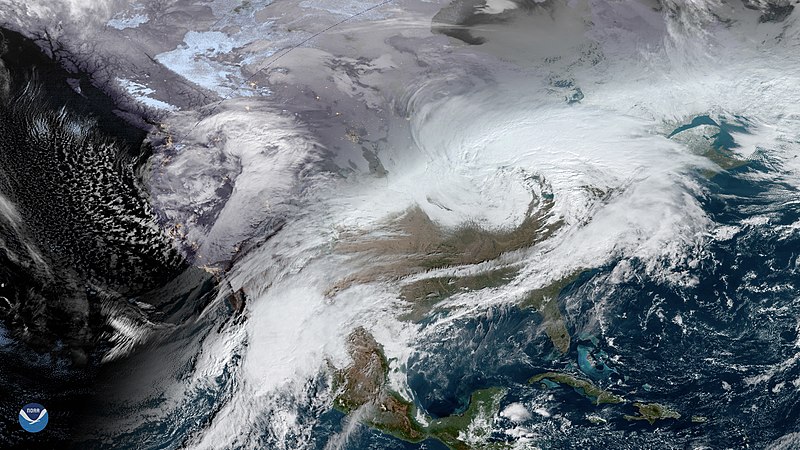West Coast Storm Bomb
An Atmospheric River Makes Short Work of the West Coast
NOAA Satellites, Public domain, via Wikimedia Commons
On the West Coast, atmospheric river looms as citizens take refuge

A massive storm system ravaged the west coast of the United States on October 23rd and 24th. While the rain is a welcome sight by the citizens of California, particularly in the north, where the state has been plagued by drought and are still feeling the effects of wildfires. Unfortunately, this rain won’t be enough to end the drought in most places, but it will help. This extreme turnaround from drought to torrential rain and storms is frequent in this area of the country and will only get more extreme as climate change goes on. The storm was hitting with intensity that hasn’t been seen in this area – 8 to 10 inches of rain was expected. Experts warned of potential flash flooding and mudslides. The record for the wettest day in October for San Francisco was shattered, with 4.02 inches of rain falling in a 24-hour period. The previous record was 2.48 inches. According to AccuWeather and the National Weather Service, Sacramento also had a rainfall record fall, with 5.44 inches of rain as of early Monday morning, and the previous record was 5.28 inches all the way back in 1880. 5.44 inches accounted for nearly 82% of the total rainfall this year in Sacramento. Before this, there was no measurable rainfall for 212 days straight from late March to the middle of October.

This powerful storm surge is the direct result of an atmospheric river, and this caused most of California to go from drought to storm with little warning. This has triggered widespread power outages, flash flooding, and mudslides. Gusts reached 60 – 70 miles an hour, and many people have reported 40-foot waves off the coast of southern California, Oregon, Washington, and even as far north as British Columbia, and to make matters worse, a tornado warning was issued west of Wasco, California, the first such warning in 592 days. This kind of storm system is often referred to as a bomb cyclone, which is a non-tropical storm whose pressure drops at least 24mb in 24 hours. This bomb cyclone more than doubled that rate.
As you would imagine, power outages were plentiful. Over 116,000 customers lost power in California and a further 72,000 customers in Washington. Mudslides and flash flooding were also cause for concern. State highways 16 and 20 were shut down due to mudslides, and there were numerous traffic accidents in San Francisco. A terrifying video was posted to social media by a driver on the Richmond-San Rafael Bridge. The video shows a semi nearly blowing over in the 70 mile an hour winds and the back tires were lifted off the ground. The semi’s trailer then collides with a nearby vehicle and crashes on the other side of the bridge, blocking all lanes of traffic.

Evacuations were ordered in the Santa Cruz Mountains south of San Francisco. These mudslides were happening in areas that were most affected by wildfires, and the reason they cause so much damage is the runoff water from the storm did not have any plants or trees to grab onto, meaning it was free to run all the way down the mountains into towns and counties. This storm did not come without casualties, unfortunately. The storm has been marked as the official cause of death for 2 people after a tree fell on their car. All in all, this is one of the worst storms to ever ravage the West Coast, and the citizens living there will be glad to see the back of it.




